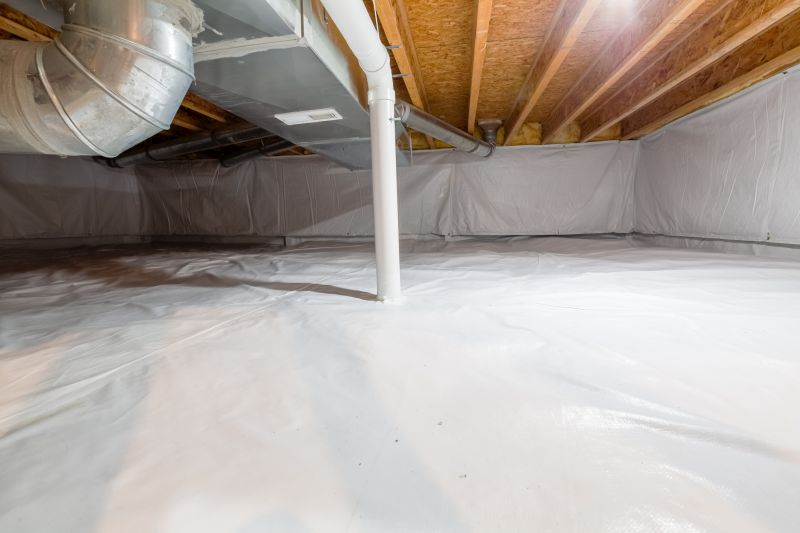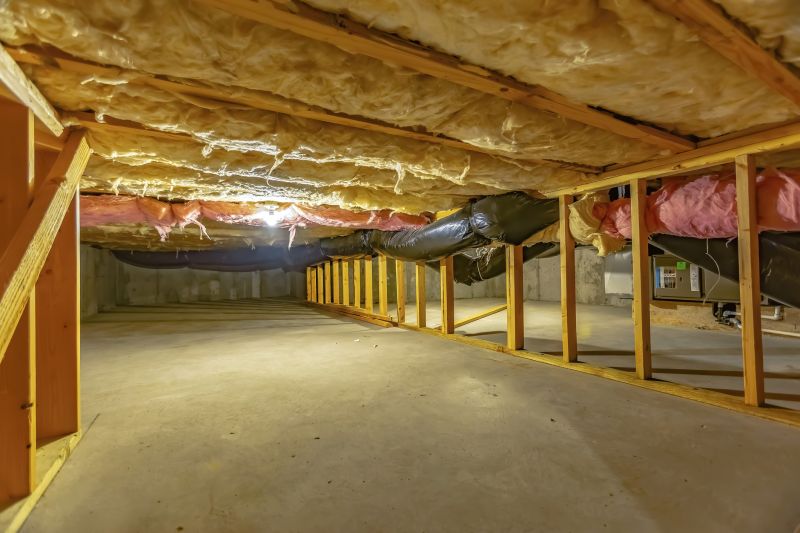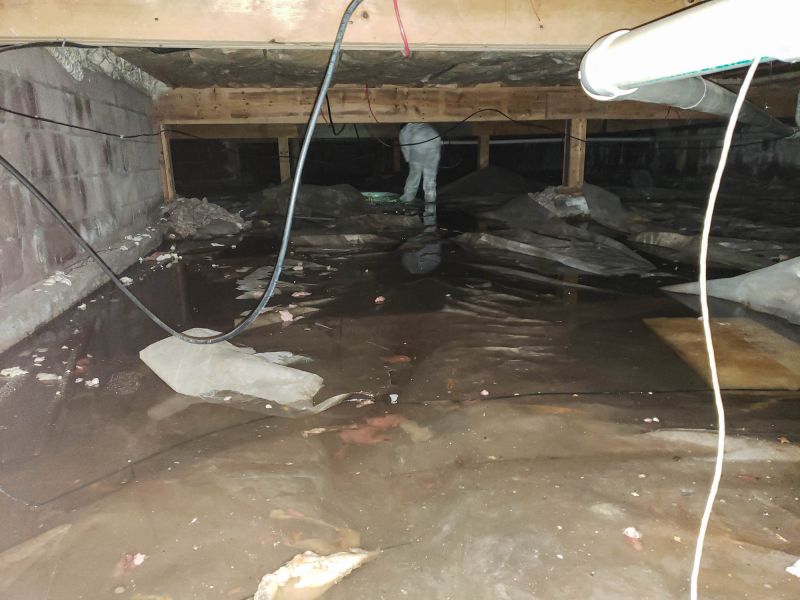Reliable Crawlspace Sealing Services
Crawlspace encapsulation involves sealing and insulating the crawlspace to prevent moisture intrusion, improve indoor air quality, and enhance energy efficiency. Proper encapsulation can significantly reduce the risk of mold growth, wood rot, and pest infestations, creating a healthier and more comfortable living environment.
Encapsulation prevents excess moisture from entering the crawlspace, reducing the risk of mold and structural damage.
Sealing the crawlspace helps maintain consistent indoor temperatures, lowering heating and cooling costs.
Reducing mold and dust from the crawlspace minimizes airborne contaminants that can affect health.
A sealed crawlspace deters pests from nesting and entering the home interior.

Image of a fully sealed and insulated crawlspace showcasing the clean, protected environment.

Photo highlighting the vapor barrier and insulation installed on the floor.

Image of insulated and sealed wall surfaces within the crawlspace.

Visual of a completed, tidy crawlspace ready for inspection or use.
Failing to encapsulate a crawlspace can lead to increased moisture levels, fostering mold growth that can compromise structural integrity and impact indoor air quality. Unsealed crawlspaces are also more susceptible to pest infestations and energy loss, resulting in higher utility bills. Studies indicate that properly encapsulated crawlspaces can reduce energy costs by up to 15 percent and decrease mold-related health issues.
| Risks of Not Encapsulating | Benefits of Encapsulation |
|---|---|
| Increased moisture levels | Moisture control and mold prevention |
| Higher energy bills | Enhanced energy efficiency |
| Pest infestations | Pest deterrence |
| Structural damage | Protection of foundation and framing |
| Poor indoor air quality | Healthier indoor environment |
| Mold growth | Reduced health risks and property damage |
| Wood rot | Extended lifespan of crawlspace components |
| Increased maintenance costs | Lower long-term expenses |




